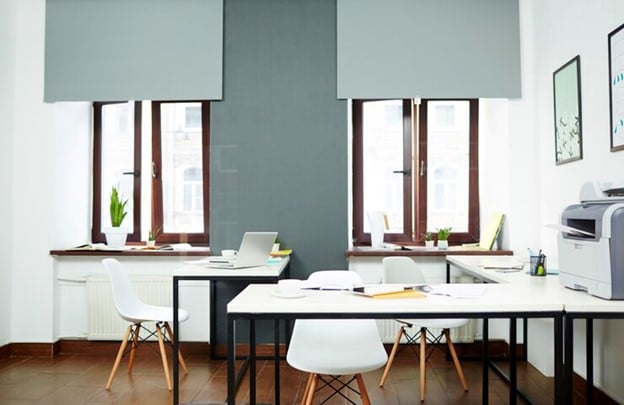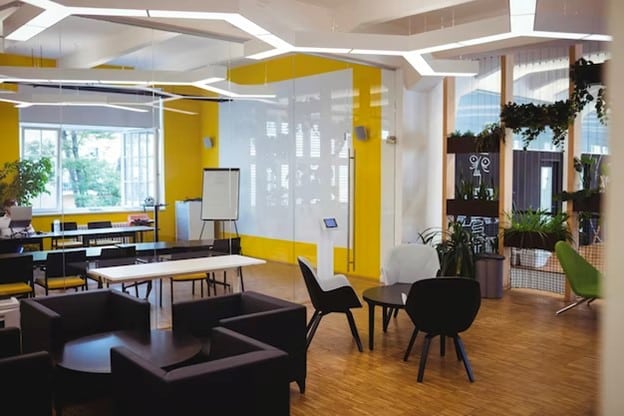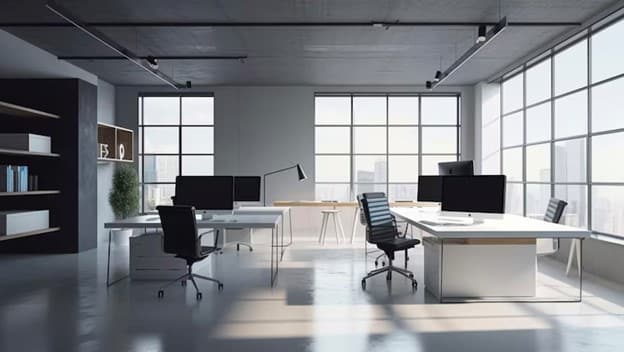Over the past few years, there has been a remarkable transformation in the traditional office landscape, marked by the ascent of flexible workspaces, notably in the form of coworking spaces. This transformation is not a fleeting trend but a substantial response to the evolving preferences and requirements of contemporary professionals. Whether it be freelancers and startups or well-established corporations, there has been a notable surge in the demand for flexible workspaces. This phenomenon is propelled by a convergence of factors that collectively reshape the conventional understanding of the workplace.
Evolution in Professional Preferences
A pivotal factor propelling the escalating demand for coworking spaces is the evolving preferences of professionals in the contemporary workforce. The conventional 9-to-5 office model is gradually becoming obsolete as individuals increasingly seek enhanced flexibility and autonomy in determining how, when, and where they work. The proliferation of remote and flexible work arrangements has paved the way for coworking spaces to emerge as a widely embraced alternative.
Modern professionals, particularly millennials and members of Generation Z, prioritize cultivating a healthy work-life balance and place significant value on environments that foster both productivity and well-being. The rigid and conventional structures inherent in traditional office spaces are being supplanted by coworking environments that provide a dynamic, adaptable, and collaborative atmosphere, perfectly aligning with the preferences of the contemporary workforce.
Innovative Designs: Fostering Collaboration and Creativity

Coworking spaces transcend the mere provision of desks and chairs; they are meticulously crafted to cultivate collaboration, creativity, and a sense of community, featuring flexible layouts with open spaces and shared workstations. The design incorporates sophisticated elements such as HVAC silencers, effectively minimizing noise from heating and air conditioning systems. This thoughtful enhancement elevates the overall coworking experience, fostering a quieter and more focused atmosphere that aligns seamlessly with the industry’s dedication to productivity and well-being.
The intentional layout of coworking spaces is geared toward encouraging interaction among diverse professional groups. This involves integrating pivotal features like open floor plans, shared workstations, and communal areas, all of which play a crucial role in fostering a robust sense of community and networking—qualities often absent in traditional office setups. Additionally, these spaces are carefully designed to encompass various elements like flexible meeting rooms, private work pods, and collaborative zones. This diverse array of choices empowers professionals to customize their workspace, tailoring it precisely to meet their work requirements. This emphasis on adaptability not only amplifies productivity but also facilitates seamless transitions between focused individual tasks and collaborative projects, establishing a unified and efficient coworking environment.
Technology: Enabling Seamless Connectivity
The driving force behind the surge in coworking space popularity is rooted in the seamless infusion of technology into these work environments. Coworking providers strategically leverage cutting-edge technologies to craft spaces that are not just efficient and interconnected but also exceptionally user-friendly. Standard offerings, including high-speed internet, smart office solutions, and state-of-the-art audio-visual equipment, adeptly cater to the tech-driven requirements of contemporary professionals.
In their commitment to fostering collaboration and adaptability, coworking spaces exhibit a spectrum of innovative design elements. Marked by open floor plans, communal areas, and flexible meeting spaces, these dynamic environments embody a modern aesthetic. Notably, the incorporation of glass office doors stands out as a defining feature, seamlessly marrying technology with physical design. Beyond enhancing the sleek and modern ambiance of coworking spaces, these doors serve a practical purpose. Outfitted with smart access controls, glass office doors not only reinforce security but also sustain visual connectivity between different sections.
In essence, the fluid integration of collaborative tools and cutting-edge advancements not only propels the coworking trend but fundamentally reshapes our perception of work. By cultivating a tech-driven environment that transcends physical boundaries, coworking spaces empower professionals and businesses to navigate the intricacies of the contemporary work landscape. This transformative approach not only addresses the escalating demand for flexible work arrangements but also heralds a future where innovation, connectivity, and adaptability take center stage in professional endeavors.
Environmental Impact and Sustainability

The awareness of environmental impact and sustainability is increasingly influencing decisions about where and how people work. Coworking spaces often emphasize sustainable practices, from eco-friendly building materials to energy-efficient lighting and waste reduction initiatives. Businesses and individuals are drawn to coworking environments that align with their values and contribute to a more sustainable future.
One notable aspect of this sustainability trend is the incorporation of acoustic art panels into coworking spaces. These panels serve a dual purpose – enhancing the aesthetic appeal of the workspace while also improving its acoustic environment. By absorbing sound and reducing noise levels, acoustic art panels create a more comfortable and focused atmosphere, supporting productivity and well-being. This design element exemplifies how updates to office spaces can have a positive impact on the environment and the overall work experience.
Community Building and Networking Opportunities
Coworking spaces have transcended their initial purpose of offering physical workspaces; they now serve as vibrant hubs for community building and networking. Within these spaces, a diverse mix of professionals congregates, fostering a unique ecosystem conducive to sharing ideas, collaborating on projects, and establishing invaluable connections. Many coworking providers curate networking events, workshops, and social gatherings to fortify the sense of community.
These networking opportunities hold particular significance for freelancers, startups, and small businesses. The collaborative environment within coworking spaces stimulates the exchange of knowledge and resources, nurturing an environment ripe for innovation and expansion. As the value of networking continues to gain recognition among businesses, coworking spaces emerge as an appealing solution for those aiming to broaden their professional networks.
Global Expansion of Coworking Chains

The global expansion of major coworking chains has played a pivotal role in the widespread adoption of flexible workspaces. Companies like WeWork, Regus, and others have established a presence in numerous cities worldwide, offering consistent and reliable workspace solutions. This expansion has not only made coworking more accessible but has also contributed to its normalization as a mainstream option for businesses of all sizes.
The scalability of coworking chains allows businesses to adapt their workspace needs based on fluctuations in team size, project requirements, or geographic location. This flexibility is particularly advantageous for multinational companies and those experiencing rapid growth or contraction.
Embracing the Evolution of Workspaces
The surge in flexible workspaces, as evidenced by the thriving coworking trend, signifies a fundamental shift in the approach to work. Evolving preferences, inventive designs, seamless technological integration, sustainability initiatives, community fostering, and the global expansion of coworking chains collectively contribute to the escalating demand for these dynamic work environments. As professionals actively seek increased autonomy and varied modes of working, the coworking industry appears set to sustain its upward trajectory. Continual progress in design, technology, and a steadfast commitment to sustainability position coworking spaces not merely as a response to current needs but as a glimpse into the future of the workplace. This vision prioritizes flexibility, collaboration, and a profound sense of community.
Author Bio:
Sam Willis is a freelance writer that loves sharing his knowledge and expertise in residential and commercial real estate, as well as engineering and construction. He lives in Atlanta, Georgia where he enjoys spending time with his wife and researching real estate trends in his free time. Sam’s work as a freelance writer can be found on Building Product Advisor, a construction industry resource site.






Leave A Comment